Acoustic Rhythm Guitar Mini Course - Day 3
Cool Sounding Chords For Your Acoustic Guitar Rhythm Playing
When it comes to adding variety to your chords on the acoustic guitar, it isn’t only about techniques that you can apply to the chords you already know, but also the chords themselves, and where else you can play them on your guitar.
In today’s lesson I am going to show you some cool sounding guitar chords you can play on your acoustic in place of the open shapes that you have been working with so far in our progression.
In each example I will provide you with both the chord diagram and the resulting progression tabbed out below.
Let’s get straight into the first example:
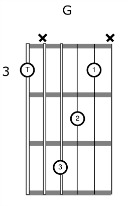
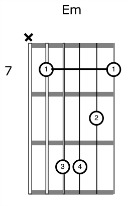
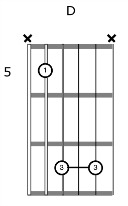
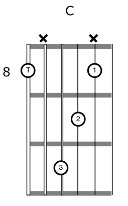

You are probably familiar with the basic bar chord forms, but in the example above I am playing the G and C chords a little differently. Instead of barring, I am using my thumb to play the root note. By doing this and omitting duplicate notes on strings 5 and 1, you get a cleaner sounding chord on your acoustic. It also frees up your pinky finger for adding embellishments. You will learn all about these in tomorrow’s lesson.
The result is cool sounding variations of your guitar chords you have been using so far in this mini course.
Here is another way you can play these chords on your acoustic guitar:
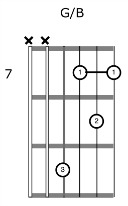
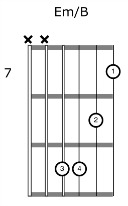
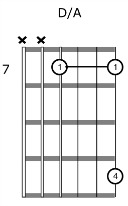
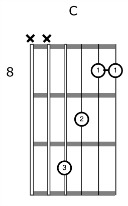

This time I have used some chord fragments. Chord fragments are when you use only part of a bigger chord shape. It is beyond the scope of this lesson to delve too deeply into this approach, however you may notice that the Em/B and C shapes in the example above are the top part of the root 5 minor and root 6 major bar chord forms respectively.
Chord fragments are very useful to know on your acoustic guitar. They sound great when someone is playing fuller shapes behind you, and/or there is a bass line. They are also great for creating solo. These types of guitar chords on your acoustic are well worth exploring further.
Here is one more example of using chord fragments for our progression:
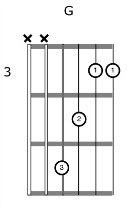
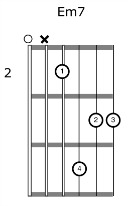
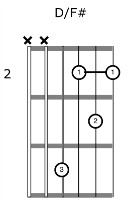
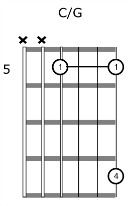

Notice that with both chord fragment examples, the shapes are very close to each other on the neck of your guitar. Keeping the shapes close in proximity to each other create very smooth sounding chords on your acoustic. In fact, some notes don’t change at all, they exist in both shapes. These make for even smoother changes and are a great way to voice out chords on your acoustic.
Until now, the shapes I have shown you have basically been the same chords but in different positions on your guitar.
The next example has a little bit of a jazz flavor to it by adding extensions to our chords. Here it is:
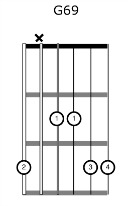
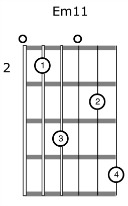
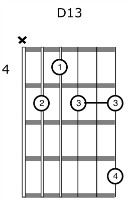
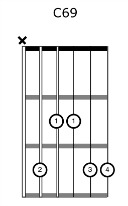

An extension is when you simply add a note or two in addition to the ones that already exist in the chord. You are extending the sound of the chord as a result.
The example above uses extensions and provides you with some pretty cool sounding chords on your guitar.
I like to think of each chord as a color. For example, just as there are many shades of blue or green, there are also many shades (ie. variations of sound) for your major and minor chords beyond what the basic forms you first learn give you.
Time To Put It All Together
Rather than incorporating other techniques learned so far in this mini course with your new chords, I will instead give you an example of creating a varied progression by mixing up the shapes themselves.
This is essential in really getting these and other chords you learn, down on your acoustic guitar. You should also come up with your own variations.
Here it is, and see you tomorrow when I show you how you can make chords like these sound even better!
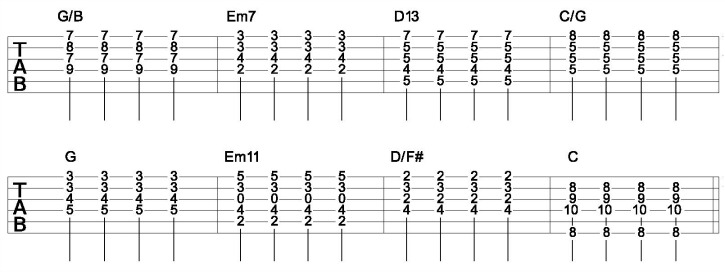
Learn how to master your acoustic playing with these online fingerstyle guitar lessons